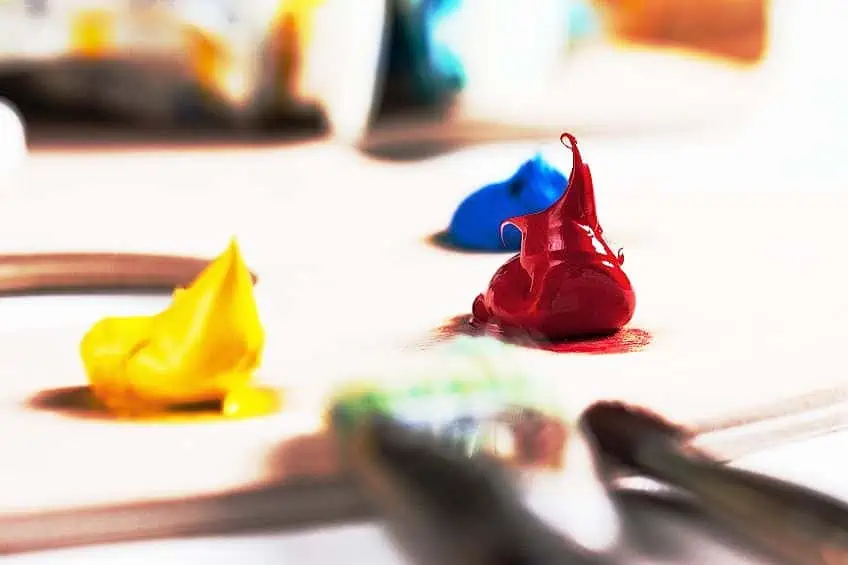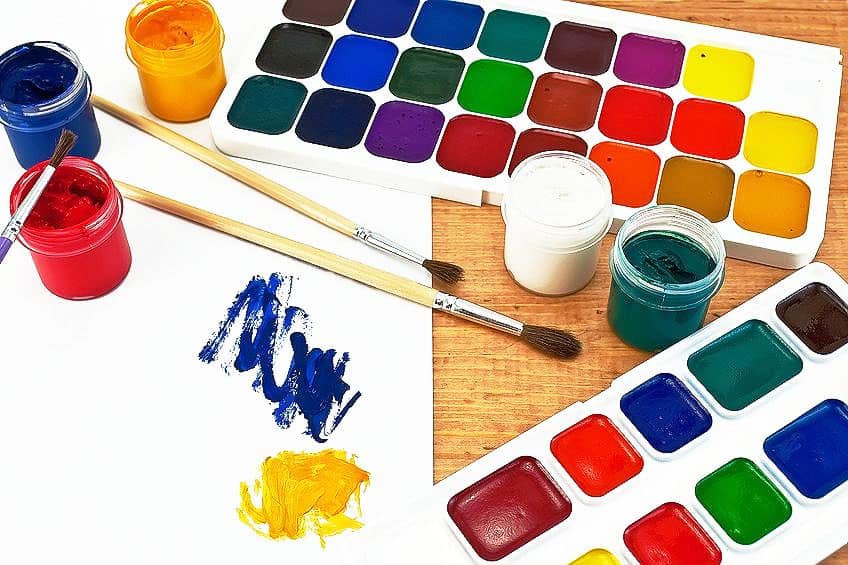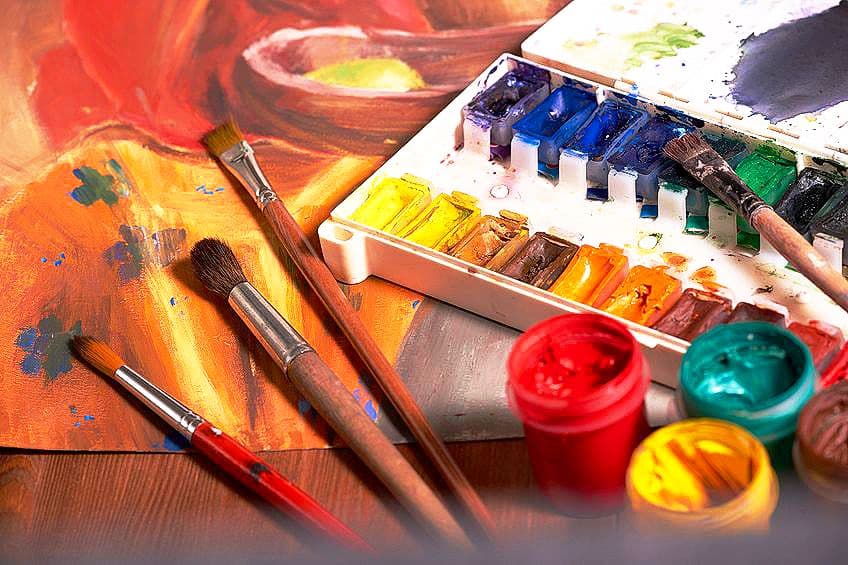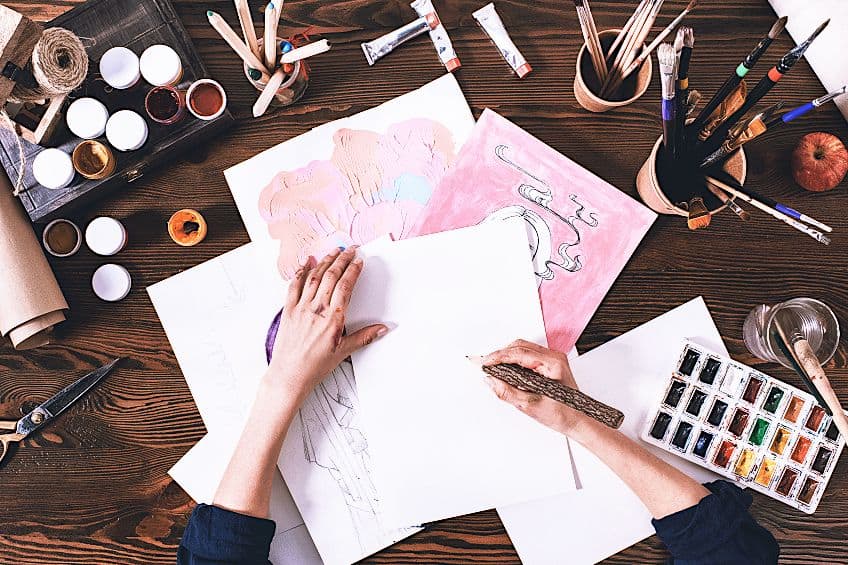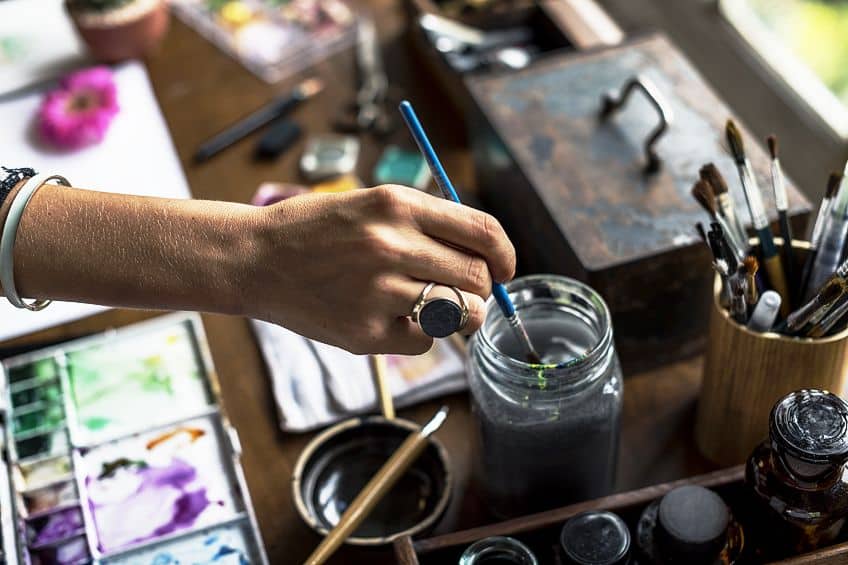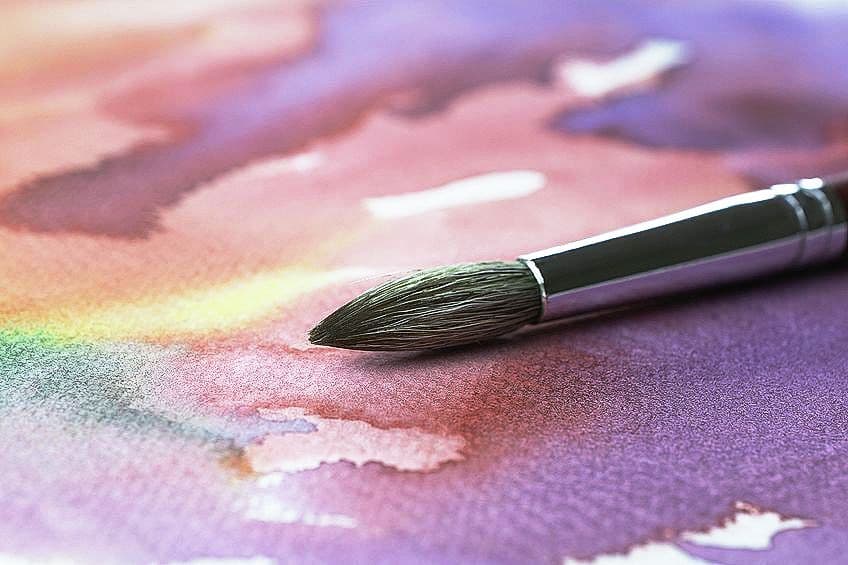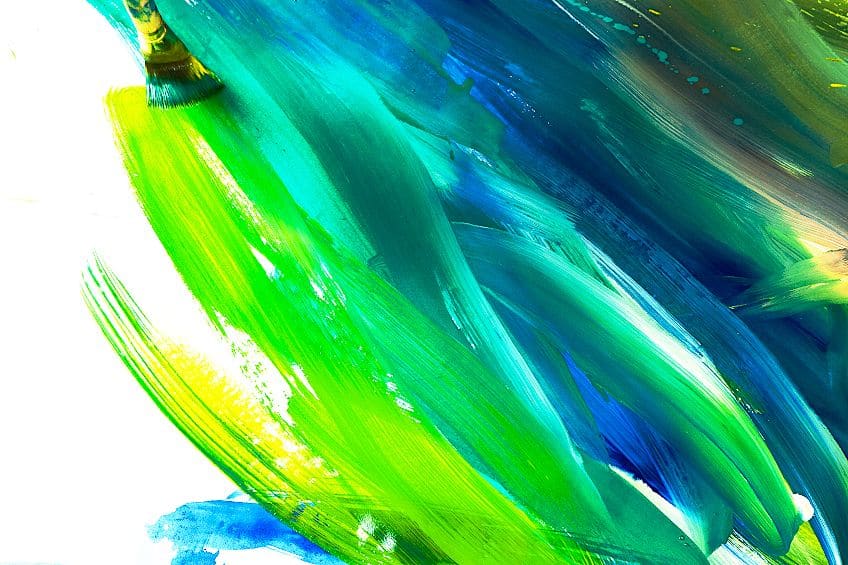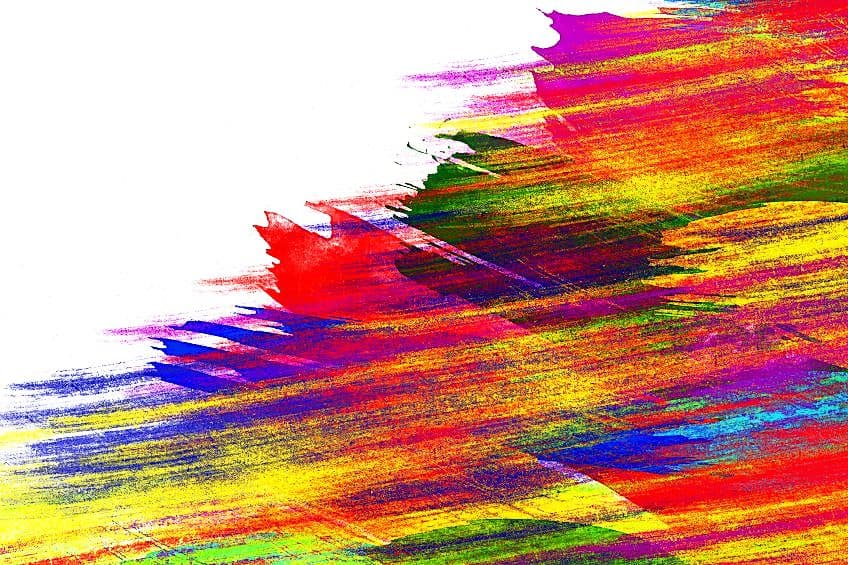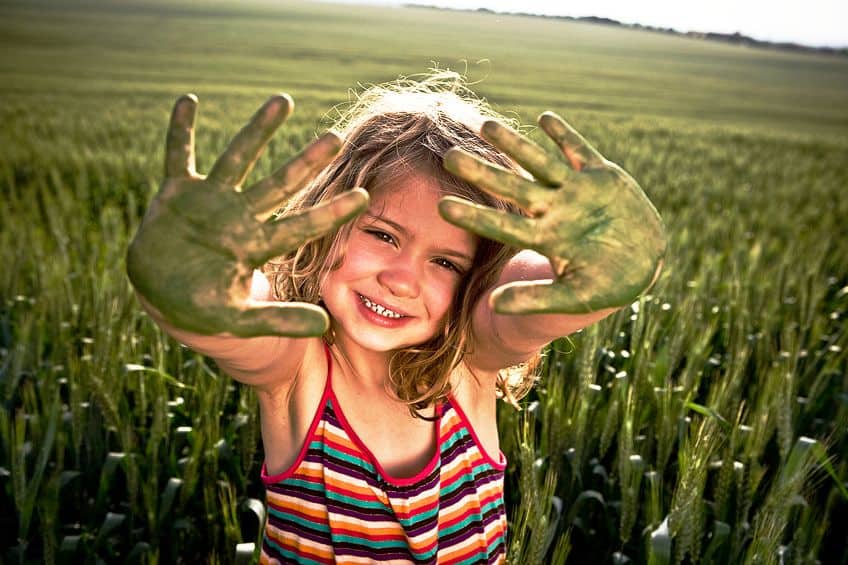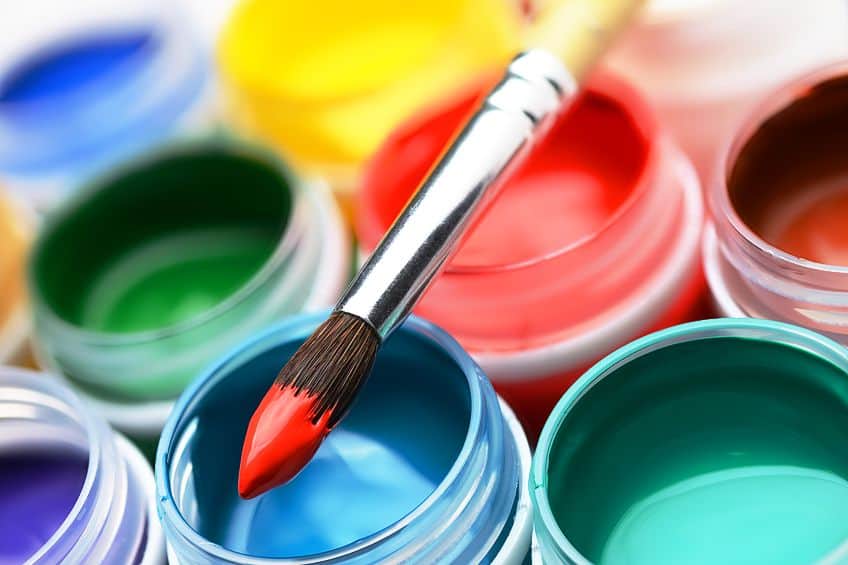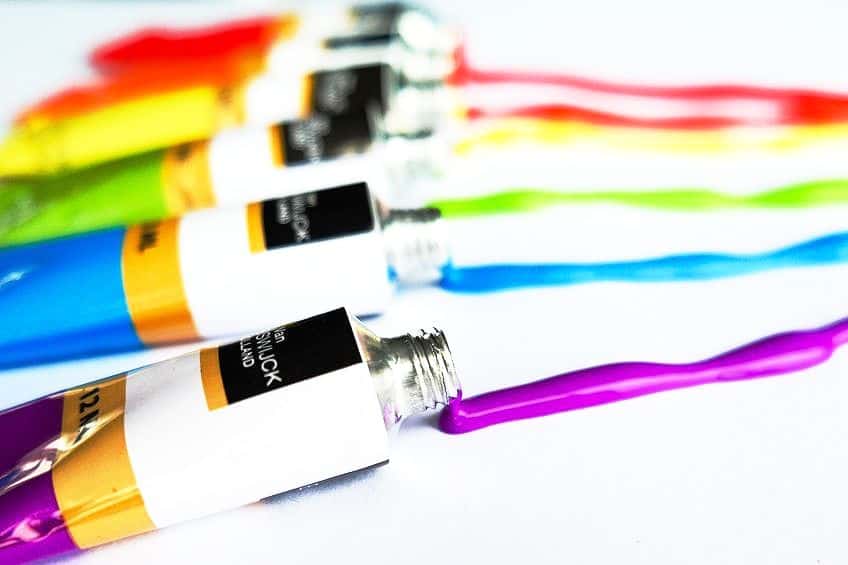How to Use Gouache Paint – Exploring the Gouache Paint Medium
In this comprehensive guide, we will explore how to use gouache paint. This versatile and vibrant medium has become popular among artists, designers, and illustrators for good reason. We really love working with gouache paint, of course, it is something that really takes getting used to, but we have used it for a while now and really love it. Yes, we still do use watercolors, but we have found gouache paint useful for a lot of things. It is a medium that is underrated by many artists even though it has been there for a while.
Contents
- 1 What Is Gouache Paint?
- 2 What Is Gouache Paint Used For?
- 3 Where to Get Gouache Paint?
- 4 Watercolor vs. Gouache Paint: A Comparison
- 5 What Types of Surfaces Can Gouache Paint Be Used On?
- 6 Gouache Painting Tutorial
- 7 Basic Techniques for Painting With Gouache
- 8 Advanced Gouache Techniques
- 9 Is Gouache Paint Toxic?
- 10 Tips and Tricks for Painting With Gouache
- 11 Inspiration for Gouache Paintings
- 12 Understanding the Properties of Gouache
- 13 Essential Materials for Painting with Gouache
- 14 Tips for Maintaining Your Gouache Paint Supplies
- 15 Tips on How to Use Gouache Paint
- 16 Frequently Asked Questions
What Is Gouache Paint?
Gouache paint is a type of water-based paint that is made from pigment, water, and a binding agent – typically gum Arabic, to form a creamy and opaque paint that dries to a matte finish. Similar to watercolor, gouache can be thinned with water, but it is different in that it dries to a flat and opaque finish. This makes it ideal for layering and creating bright and vibrant colors.
Unlike oil or acrylic paints, gouache paint dries quickly, allowing for multiple layers to be added without having to wait for long periods of drying time.
What Is Gouache Paint Used For?
Painting with gouache will open new avenues for your creativity. Gouache painting is used to create from abstract art, portraits, illustrations, still life’s, and much more.
Where to Get Gouache Paint?
There are many places where you can get gouache paints. However, in our opinion, the most convenient route is online. For example, Amazon often carries a wide selection of gouache paints. Shopping online can also be a convenient way to get the paints you need, as you can easily compare prices and selections from the comfort of your own home.
When shopping for gouache paints online, be sure to look for high-quality paints that are formulated for artists, as these will provide the best results.
Watercolor vs. Gouache Paint: A Comparison
Watercolor and gouache paint are both popular mediums for artists, but they have some key differences that make them better suited for certain types of projects. Let us compare watercolor and gouache paint in terms of opacity, versatility, and drying time.
| Feature | Watercolor | Gouache |
| Opacity | Transparent | Opaque |
| Versatility | Good for washes and delicate details | Good for layering and covering large areas |
| Drying Time | Slow to dry, may take several hours | Fast to dry, typically only takes a few minutes |
Opacity: Watercolor is a transparent medium, meaning that the colors will blend and layer, creating a unique and fluid look. Gouache, on the other hand, is opaque, which makes it better suited for covering large areas and creating bold, vibrant colors.
Versatility: Watercolor is good for creating washes and delicate details, but it can be more challenging to create solid colors and control the opacity. Gouache, on the other hand, is versatile and can be used for layering and covering large areas, making it easier to create solid colors and control the opacity.
Drying Time: Watercolor takes a long time to dry, often several hours or even overnight. This can be frustrating for artists who need to work quickly or who are looking for a fast-drying medium. Gouache, on the other hand, dries very quickly, typically only taking a few minutes. This makes it a good option for artists who need to work quickly or who want a fast-drying medium. By understanding the differences between watercolor and gouache paint, artists can make an informed decision about which medium is best for their projects.
What Types of Surfaces Can Gouache Paint Be Used On?
Versatility means you can use gouache paint on a variety of surfaces. These include paper, cardboard, canvas, and even some fabrics. We advise that you choose a surface that is absorbent, as gouache paint works best on surfaces that can absorb water and pigments. When using gouache on paper, it is recommended to use high-quality, acid-free paper that is designed specifically for water-based paints. Canvas can also be used, but it is important to prime the canvas first to create a surface that is suitable for the paint. If you are using it on fabric, we recommended you use a fabric that is tightly woven and has a smooth surface, such as cotton or linen.
It is also important to use a fixative to prevent the paint from bleeding or fading over time.
Gouache Painting Tutorial
Let’s talk about how to use gouache paint. As stated before, gouache paint is a handy and easy-to-use medium that is perfect for both beginners and experienced artists. With its fast-drying time and opaque finish, gouache paint is a popular choice for creating illustrations, designs, and paintings. In this tutorial, we will go over the basic steps for using gouache paint, including how to prepare your materials, mix your paint, and apply it to your surface. So, here is how to use gouache paint.
Preparation
Before you start painting with gouache, you need to gather all of your materials and make sure that your workspace is clean and organized. For this gouache painting tutorial, you will need:
- Gouache paint
- Paint brushes
- Water
- A palette or mixing tray
- A surface to paint on (paper, canvas, etc.)
- A container for water
- A cloth or paper towel for wiping your brushes
Mixing the Paint
One of the key benefits of gouache paint is its versatility and ability to be easily mixed and layered. To mix your paint, simply squeeze a small amount of paint onto your palette or mixing tray and add a small amount of water. Stir and mix the paint and water together with your brush until you reach the desired consistency. If required, you can add more water to make the paint more transparent, or more paint to make it more opaque.
Painting With Gouache
Once your paint is mixed, it is time to start applying it to your surface. When using gouache paint, it is important to work quickly, as the paint dries faster than other types of water-based paints. Dip your brush into the paint and take off any excess by wiping it on the edge of your palette or mixing tray. Apply the paint to your surface in the desired area.
You can use a variety of brush strokes and techniques to create different effects, including washes, dry brush, and wet-on-wet.
Laying Down Layers
We love gouache paint because it can be easily layered to create depth and dimension. To create multiple layers, simply leave each layer to dry completely before applying the next layer. In addition, you can mix different colors together to create new shades and hues.
Cleaning Your Brushes
To clean your brushes, simply rinse them in water and use a cloth or paper towel to remove any remaining paint. If the paint has dried in your brushes, use a brush cleaner or soap to remove it. We hope this gouache painting tutorial has given you an idea about the process of unlocking your creativity and turning your sketches into stunning masterpieces.
Basic Techniques for Painting With Gouache
Once you have your materials ready, it is time to start exploring the basic techniques for painting with gouache. These include:
Wet-on-Wet Technique
The wet-on-wet technique is when you apply paint onto wet paper or canvas. This creates a softer, more fluid effect and allows the colors to blend together more seamlessly. To use this technique, you will need to wet your paper or canvas first, and then apply the gouache directly onto the wet surface. This technique is great for creating atmospheric or loose paintings.
Dry-on-Wet Technique
In essence, the dry-on-wet technique is the opposite of the wet-on-wet technique. In this technique, you apply paint onto dry paper or canvas, and then use water to blend the colors together. This creates a more controlled, sharp effect, and is great for creating detailed paintings.
To use this technique, you will need to apply the gouache paint directly onto the dry surface, and then use a damp brush to blend the colors together.
Dry-on-Dry Technique
The dry-on-dry technique is when you apply paint onto dry paper or canvas and let it dry completely before adding more paint. This creates a more solid, opaque effect, and is great for creating bold, graphic paintings. To use this technique, you will need to apply the gouache directly onto the dry surface and let it dry completely before adding more paint.
Advanced Gouache Techniques
Once you have a good understanding of the basic gouache techniques, you can start to explore more advanced techniques, such as layering, glazing, and scumbling.
Layering
Layering is the process of building up multiple layers of paint to create depth and richness in your paintings. To use this technique, you will need to let each layer dry completely before adding the next. This allows the colors to blend together and creates a more dynamic painting. It is important to use a lighter color for the first layer and then build up to a darker color to create a sense of depth.
Glazing
Glazing is the process of applying a transparent layer of paint over a dry underlayer to create a luminous, glowing effect. To use this technique, you will need to dilute the gouache paint with water to create a transparent effect. Then, using a soft brush, apply the glaze over the dry underlayer.
The glaze will mix with the underlayer, creating a unique color and effect.
Scumbling
Scumbling is the process of dragging a dry brush over a dry underlayer to create a textured, rough effect. To use this technique, you will need to apply the gouache paint directly onto the dry surface and let it dry completely. Then, using a dry brush, drag the brush over the surface in a random pattern to create a rough, textured effect.
Is Gouache Paint Toxic?
Now that we covered how to use gouache paint, you may be also asking yourself; is gouache paint toxic? While the ingredients in gouache paint are generally considered non-toxic, it is important to use caution and follow safety guidelines when working with any type of art materials. Gouache paint is considered non-toxic because it does not contain harmful solvents or chemicals like oil-based paints.
Still, it is important to take precautions to protect yourself and others from any potential health risks.
Here are some safety tips for using gouache paint:
- Avoid ingesting the paint. While gouache paint is non-toxic, it is still not safe to eat or drink. Like with all chemicals, make sure you wash your hands thoroughly after using the paint. It is also advised that you make every effort to it out of reach of children and pets.
- Avoid inhaling the paint fumes. If you are using gouache paint in a well-ventilated area, the risk of inhaling fumes is low. However, if you are working in a poorly ventilated area, you may want to use a mask or open a window to reduce your exposure to fumes.
- Keep the paint out of your eyes. If you get gouache paint in your eyes, rinse them thoroughly with water and seek medical attention if necessary.
- Store the paint properly. What you want to do is to store your gouache paint in a cool, dry place to prevent spoilage and contamination.
By following the above tips, you reduce any potential risk that might result from using gouache paint. It is important to always use caution and follow the manufacturer’s guidelines when working with any type of art materials.
Tips and Tricks for Painting With Gouache
In this section, we look at some tips and tricks for getting the most out of your gouache paint:
Experiment With Layering
One of the unique properties of gouache paint is that it can be rewetted and layered on top of previous layers. This allows you to build up color and texture in your paintings in a unique way. Of course, experiment with layering colors to see what effects you can achieve.
Use A Wet Palette
A wet palette is a great tool for keeping your gouache paint wet and workable. To make a wet palette, simply moisten a piece of sponge and place it in a container with a lid. Place your paint on top of the sponge and cover the container. This will keep your paint moist and workable for several hours.
Take Advantage Of Transparency
Gouache paint is more transparent than other types of paint, which can give your paintings a unique, luminous quality. Use this property to your advantage by layering colors to build up depth and luminosity.
Mix Colors On The Palette
Gouache paint is easily mixable, which makes it a great option for creating custom colors. Mix colors on your palette to create the shades you need for your painting.
Use Glazing Techniques
This painting technique involves applying a transparent layer of paint over a solid base color. This technique can be used to create luminous effects and build up depth in your paintings. To glaze with gouache paint, simply mix a small amount of paint with water and brush it over your base color. Of course, these are just a few of the many tips and tricks for painting with gouache paint.
With a little experimentation and practice, you can master this versatile medium and create beautiful paintings that are truly unique.
Inspiration for Gouache Paintings
Whether you are an experienced artist or a beginner, there are countless ways to find inspiration for your gouache paintings.
Famous Gouache Painters and Their Works
One great way to find gouache painting ideas is to study the work of famous gouache painters. These artists have used the medium to create stunning works of art that showcase their versatility and range. Notable gouache painters include:
- Paul Cézanne
- Pablo Picasso
- Henri Matisse
- Gustav Klimt
By studying the works of these artists, you can gain a better understanding of the many different styles and techniques that can be achieved with gouache paint. You can also get a sense of the types of subjects that work well with the medium, such as still life’s, portraits, landscapes, and abstract compositions.
Creative Themes and Subjects for Gouache Paintings
Another great way to find gouache painting ideas is to explore different themes and subjects. Some of the most popular include:
- Nature scenes, such as forests, mountains, and beaches
- Cityscapes and urban scenes
- Fantasy and surreal landscapes
- Portraits and figures
- Abstract compositions and experimental techniques
No matter what your personal style or interests may be, there is a theme or subject that will work well for your gouache paintings. The key is to choose something that speaks to you and that you are passionate about, as this will help you to create more meaningful and engaging works of art.
How to Get Your Own Gouache Painting Ideas
Ultimately, the best way to find inspiration for your gouache paintings is to look within yourself – your experiences, interests, and values, and think about the things that are most important to you. This could be anything from your love of nature and the outdoors to your fascination with the urban landscape, to your passion for abstract art. After deciding on what you want to paint, you can begin to develop your own style and technique.
This might involve experimenting with different color palettes, brushstrokes, and compositional elements.
With time and practice, you will develop a unique style that is all your own, and that is a true expression of your personality and creativity. Finding inspiration for your gouache paintings is indeed a crucial step in the creative process. By studying the work of famous gouache painters, exploring different themes and subjects, and looking within yourself, you can discover the inspiration you need to create stunning works of art that are truly your own.
Understanding the Properties of Gouache
Gouache paint has several unique properties that set it apart from other water-based paints, such as watercolors and acrylics. Notably, the paint’s opacity allows for vivid, rich, and intense color. Unlike watercolors, which are transparent, gouache can be applied in solid, opaque layers, making it ideal for painting large areas of color or for covering up mistakes.
Another property of gouache is its versatility.
Gouache can be thinned with water to create a transparent effect, or it can be applied in thicker, opaque layers for a more solid, matte finish. This makes it a great choice for artists who are looking for versatility in their work, as they can easily switch between transparent and opaque effects.
Essential Materials for Painting with Gouache
Before you get started with gouache painting, you will need to gather a few essential materials. These include:
- Gouache paint
- Paint brushes
- Water
- Palette or mixing tray
- Palette knives
- Paper or canvas
- Spray bottle (optional)
There are many different gouache paint brands and formulations available. Popular brands include Winsor & Newton, Schmincke, and Daler Rowney. Since each product will have its own unique properties, it is best to experiment with a few to find the one that works best for you.
Tips for Maintaining Your Gouache Paint Supplies
To keep your gouache paint in the best possible condition, here are some tips:
Store Your Paints Properly
What you want to do is to keep your gouache paints in a cool, dry place away from direct sunlight, and in a container that is airtight. This will help to prevent your paints from drying out and will also help to preserve the vibrant colors.
Clean Your Brushes Regularly
One of the most important things you can do to keep your gouache paint supplies in top condition is to clean your brushes regularly. This will help to prevent the build-up of paint and other debris on your brushes, which can interfere with the quality of your artwork. To clean your brushes, simply use soap and water, and be sure to rinse them thoroughly to remove any remaining residue.
Keep Your Paints and Brushes Separate
Another important tip for maintaining your gouache paint supplies is to keep your paints and brushes separate. This will help to prevent any cross-contamination between different colors and will also help to keep your brushes clean and free from debris.
Use Good Quality Supplies
Finally, it is important to use good quality supplies when working with gouache paints. This includes high-quality paints, brushes, and surfaces to work on. Using good quality supplies will not only help you to create better artwork, but it will also help to ensure that your supplies last longer, and that your paintings look their best for years to come. Maintaining your gouache paint supplies is an important part of the painting process, and it can help to ensure that your paints and brushes last for as long as possible.
By following these tips and taking good care of your supplies, you can enjoy all the benefits that gouache paints have to offer, and create beautiful, vibrant paintings for years to come.
Tips on How to Use Gouache Paint
To get the most out of your gouache painting experience, it is important to keep these few tips in mind:
- Always make sure to use good-quality paper or canvas.
- Always have a spray bottle on hand to keep your paint moist and to control the wetness of your surface.
- Experiment with different brands and formulations of gouache paint to find the one that works best for you.
- Start with light colors and build up to darker colors to create a sense of depth in your paintings.
- Don’t be afraid to make mistakes. Gouache can be easily painted over or corrected, so don’t worry about making mistakes.
- Have fun and enjoy the process!
Gouache paint is a versatile and vibrant medium that is perfect for artists, who are looking for versatility and flexibility in their work. Whether you are a beginner or an experienced artist, there is something for everyone when it comes to painting with gouache. So, grab your materials, get started, and have fun!
Frequently Asked Questions
How Do You Thin Gouache Paint?
Gouache paint can be thinned with water, which can be used to control the consistency of the paint. Just add a small amount of water to the paint and mix it thoroughly.
How Do You Clean Up After Using Gouache Paint?
Gouache paint can be cleaned up with water, which makes it a great option for artists who want a low-maintenance painting process.
Can Gouache Paint Be Used For Transparent Glazes?
While gouache paint is more opaque than watercolor, it can still be used to create transparent glazes. To create a transparent glaze with gouache paint, simply mix a small amount of paint with water and brush it over the surface of your painting. With a little experimentation and practice, you can master this versatile medium and create beautiful paintings that are truly unique.
Megan is a writer and researcher who holds a degree in Social Sciences, with a specialization in Psychology and Environmental Science, from the University of Cape Town. Her dedication to acquiring knowledge and making a positive impact has driven her current work in promoting conscious and sustainable growth in Southern Africa. Megan’s interests encompass exploring the physical and psychological impacts of color in our environment on our mood and well-being. She is also passionate about the role of art and creativity, which has been an integral part of society since the beginning of human history. Since 2022, Megan has been contributing blog posts on painting and color theory at artfilemagazine.
Learn more about Megan van Schoor and about us.
Cite this Article
Megan, van Schoor, “How to Use Gouache Paint – Exploring the Gouache Paint Medium.” artfilemagazine – Your Online Art Source. June 26, 2023. URL: https://artfilemagazine.com/how-to-use-gouache-paint/
van Schoor, M. (2023, 26 June). How to Use Gouache Paint – Exploring the Gouache Paint Medium. artfilemagazine – Your Online Art Source. https://artfilemagazine.com/how-to-use-gouache-paint/
van Schoor, Megan. “How to Use Gouache Paint – Exploring the Gouache Paint Medium.” artfilemagazine – Your Online Art Source, June 26, 2023. https://artfilemagazine.com/how-to-use-gouache-paint/.


